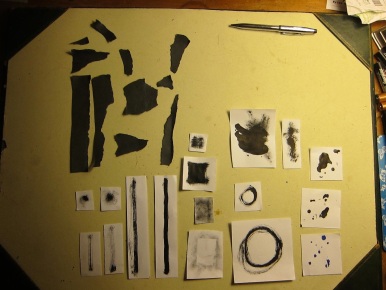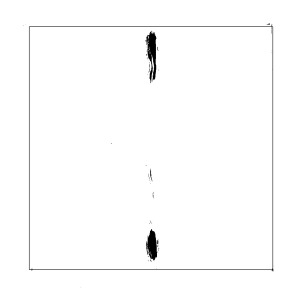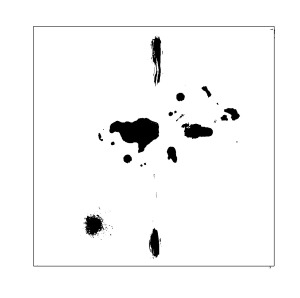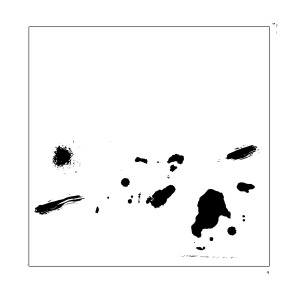I’m very interested in the juxtaposition of geometric forms with handmade, natural or accidental ones. So, after our visual grammar classes over the last couple of weeks, I cut out, ripped and painted some shapes and lines that didn’t have a smooth or clear smooth edge and did some experiments to see what effect there was when they were used in the grid with the more uniform squares and lines we cut out before.
Below are some small observations from that. (Other shapes will come another day).
Firstly, I found (below) that a line with a rough or uneven edge, even it wasn’t as dense, could have the same ‘presence’ or authority as a line that was more even and uniform. Perhaps when they are all together in the same frame, the weaker lines borrow something from the geometric one. The clear verticals of the frame probably enforce this:
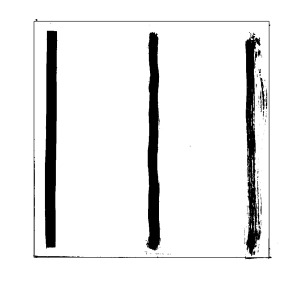
But I also wonder if there’s something about straightness that we are conditioned to recognise and appreciate, and maybe even look for. Could a straight line be felt, even if not much of it is visible? There is probably something here of the gestalt principle of continuation (or is it closure?); how much of something do we need to see before we assume the rest is there?

Again, the two marks in the image above look, by inference from the other two lines and the border, as if they could be part of a single line. The top mark also begins to travel downwards, so the idea of it continuing as a line is perhaps an easy one. Next question: would the broken line be so apparent if it was on a different axis to the vertical?
Yes, we can see it. As well as support from the support of the horizontal lines of the frame, this form is also the beginnings of a cross, something we know has two strong straight lines. By the time we get to the image below, it would be impossible for you not to see a straight line there. Supporting it this time is maybe the hidden fold line that we know would be there if the frame were folded:
After this, I wanted to see if this inferred straight line could be ‘broken’ somehow by adding noise:
Less visible if we remove our marks from any obvious axis?
I’m super aware that, from the title of this post onwards, I’ve been talking about straight lines. Impossible then, not to look for them. Maybe test the images out on your Granny or a small child.
What does feel clear though, is this prevalence and presence that straight lines have. Looking at my laptop and around my desk as I write this, I can see hundreds of them. They’re so omnipresent that we take them for granted and it’s no surprise that we look for them. And yet are straight lines something found in nature?
Curves and cracks seem to be defined by their difference to the straight.
